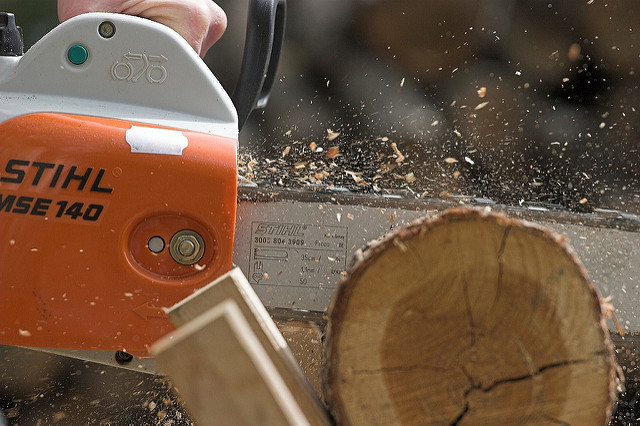So here are some of the most important points to know about caring for your chainsaw. We'll start with basic maintenance of the chain itself:
Plenty of tools exist to sharpen a chain at home, but you really only need a file, good lighting and time. You can secure the chain in a vice, sharpen directly on the saw, or even secure the saw and bar using a vice.
Round teeth take a question-mark shape due to the rounded side plates, and most chains specify what size round file to use. Looking at the top of the chain, you’ll notice the cutting portion of the tooth is formed at a 35-degree angle, and your goal while sharpening is to maintain this angle, or to reclaim it if it’s been offset for some reason.
The underside of the top plate is also cut at a specific angle (the undercut). To maintain proper undercut, the top of a round file needs to protrude over the top plate just slightly (about 1/8 inch). While sharpening, one hand maintains the 35-degree angle, while the other maintains the file height. Maintaining the undercut makes for smoother cuts.
A couple of firm strokes (away from you) and the tooth should be done. Cutting teeth need not be a uniform height, so resist the temptation to take them all down to match the lowest one.
Replacing broken or damaged teeth, or kinked sections of chain, requires only a few tools and spare links and teeth. After first filing off the rounded head, knock the rivet through with a narrow punch, or place in a chain break to back the pin out of its hole. Completely remove the pin, install the new tooth, section, driver or link with the correct side facing up, and finish with a new pin. If done with a hammer, you’ll need to form a rounded rivet head with a ball-peen. If the chain is stiff, the rivet is too tight, but it will loosen with use.
